Guinea Pigs
Can Guinea Pigs Eat Clementines? Benefits & Hazards
Clementines are wonderful citrus fruits and are easy to peel and consume. Most of us love eating clementines. But, do Guinea Pigs eat clementines? Well, yes, as long as you follow the right amount, Guinea Pigs can eat Clementines.
Contents
- 1 Can Guinea pigs eat Clementines?
- 2 The Nutritional Benefits of Clementines – What Nutrients do Clementines offer you?
- 3 Can Guinea Pigs Eat Peels of Clementines?
- 4 Can Guinea Pigs Eat Seeds of Clementines?
- 5 Can Guinea Pigs Eat Leaves of Clementines?
- 6 Can Guinea Pigs Eat Canned Clementines?
- 7 Can Guinea Pigs Eat Juiced Clementines?
- 8 How to Serve Clementines to Guinea Pigs?
- 9 Difference Between Clementines, Oranges & Satsumas
- 10 Can Guinea Pigs Eat Satsumas?
- 11 Do Guinea Pigs like Oranges?
- 12 The Bottom Line
Can Guinea pigs eat Clementines?
Clementines are a type of oranges, and Guinea pigs can easily eat them. While they may be acidic in nature, feeding a little number of clementines to Guinea pigs can be one of the good options. The high amount of Vitamin C in clementines is an essential element in a Guinea pig diet. Since Guinea pigs can not synthesize vitamin C themselves, clementines can be a great option for them.
The Nutritional Benefits of Clementines – What Nutrients do Clementines offer you?
Clementines are a hybrid of mandarins and sweet oranges. These fruits are sweeter than most of the other citrus fruits and quite easy to peel. Clementines have been rated to be rich in Vitamin C and antioxidants.
The Nutritional facts about the Clementines can be ascertained on the following lines. These values for an average-sized clementine weighing approximately 70 to 75 grams-
- Calories: 35
- Fat: 0.1g
- Sodium: 0.7mg
- Carbohydrates: 8.9g
- Fiber: 1.3g
- Sugars: 6.8g
- Protein: 0.6g
- Vitamin C – 40% of the daily value
A huge amount of the calories or energy in clementines comes from the sugars and a little number of proteins as can be seen from the above table. The major strength of Clementines lies in the amount of Vitamin C available in it. Vitamin C is a very important ingredient in a Guinea Pig diet, and that should be one of the reasons why it can be a great option for your guinea pig.
Benefits of Clementines on Guinea Pig’s Health
The prime health benefit of Clementines on a Guinea Pig’s health is in the amount of Vitamin C that it can provide. Since Scurvy is one of the prime diseases that a Guinea Pig can suffer from, a rich source of Vitamin C can help you avoid the occurrence of the disease in your pet rodent.
Clementines also contain a decent amount of Vitamin B6 and Vitamin A. This will make it one of the best-balanced diet. These vitamins can help maintain a good metabolism rate. If your Guinea pig is pregnant or lactating, the good amount of calcium and other good minerals in clementines can prove to be a great option in such a case.
Vitamin B6 can also be a good option for the better health of the kidney and liver.

Can Guinea Pigs Eat Peels of Clementines?
Guinea pigs can eat clementine peel. A small amount of clementine peel would cause not much harm. The clementine peel contains a lot of vitamin C, but having too much of Clementine peels can hurt them. The flavonoids and antioxidants contained in the clementine peel can be beneficial for a Guinea pig health.
The peel may, however, contain a lot of acidic content and thus can cause a few issues. Of course, the sugar content in the peel is considerably lower, but the high acidic content can prove to be a little bad for the health of your Guinea pig if you exceed the limit.
Can Guinea Pigs Eat Seeds of Clementines?
Clementine seeds should never be fed to the Guinea pigs. Of course, they do not have any issue with respect to the nutrients, but small seeds can cause a choking hazard. In fact, it is advisable to remove the seeds from any type of fruit – leave alone clementines – to your Guinea pig.
Seeds of clementines or any other types of citrus fruits such as oranges, mandarins, and sweet oranges are quite hard. They may be difficult for your Guinea pig to chew on and can cause it to experience choking, and even fatalities in certain cases.
Can Guinea Pigs Eat Leaves of Clementines?
Yes, Guinea pigs can eat Clementine leaves. The leaves of the fruit may not contain any huge amount of nutrients suitable for your Guinea pig, but they can prove to be effective in ensuring a good munching.
Guinea pigs tend to be active for more than 20 hours a day. Their sleeping pattern makes them stay active throughout the day, and having something to munch on can be a good option. Once again, do ensure that you do not feed too much of clementine leaves though.
Can Guinea Pigs Eat Canned Clementines?
Guinea pigs cannot eat canned clementines. Even if your pet finds it comfortable to eat canned clementines, you are not expected to serve it to your Guinea pig. They contain preservatives and added sugar and may not be suitable for guinea pigs.
The canned clementines come with a high amount of added preservatives for increasing the shelf life of the fruit. It may also contain a lot of sugar for preservation purposes. Serving canned clementines may not be the right choice for your Guinea pigs. It is advisable to feed them with only fresh clementines.
Can Guinea Pigs Eat Juiced Clementines?
Guinea pigs cannot drink clementine juice. The high concentration of sugar in the clementine juices can be what will make it a bad choice for the health of your pet. However, you can feed them with the juiced clementines you have prepared yourself from fresh clementines. But, feed it only occasionally.
The best way to serve clementine juice to feed your guinea pigs would be to squeeze in the clementines in a glass and then dilute it with water in a 50:50 concentration. Make sure to use fresh water and never add any sugar and other ingredients. This can be a safer option for your guinea pigs to serve juiced clementines.
How to Serve Clementines to Guinea Pigs?
There are a few tips you need to follow when serving clementines to your Guinea pigs. Preparing clementines can be a little difficult task, and you need to be careful with the procedure in how to serve clementines to Guinea Pigs.
- Choose the fresh clementines
- You need to pick the fresh and ripe clementines for your Guinea pigs. Using green or stale clementines can be a bad idea. They can hurt your
- Guinea pig or cause other health issues.
- Wash the clementines before feeding
- Most of the oranges are sprayed with chemicals, and this can include Clementines as well. The fruit may also be covered with chemicals to make them look shiny. Washing them in clean water can be a great option to keep your guinea pig safe and healthy.
- Peel the fruit and serve
Before you can feed the fruit to your Guinea pig, make sure you have peeled it. Of course, you can even feed the clementine peel to the pet, but too much of it can be a risky affair. Feed only a small slice and ensure that you have removed the seeds before feeding them to the Guinea pigs.
Serving Size Of Clementines to Guinea Pigs
Clementines contain a lot of sugar, and that can be a little risky affair for your Guinea pig. A huge amount of sugar can result in severe health issues and obesity problems. That would mean you need to be careful about serving size and make sure that you are serving only a small amount of clementines to your pet.
The occasional feeding which does not exceed more than twice a week should be what would make it one of the excellent options. Feeding only small pieces at a time is also of much importance. Ensuring the removal of the seeds should be what would further make it a great choice for most of your needs.
Difference Between Clementines, Oranges & Satsumas
Clementines are a type of citrus fruit, and it is quite obvious to get confused between different citrus fruits such as Clementines, Oranges & Satsumas.
Can Guinea Pigs Eat Satsumas?
They are super sweet and juicy. One of the huge advantages of Satsumas is that they are seedless and can be a very safe option for your Guinea pig. The high antioxidant content in satsumas can make it stronger options for the best food for guinea pigs.
A lot of juice and a seedless availability makes them a great option, but finding them may be a little difficult. The fruit is cultivated in Japan, and finding them may be a little difficult.
Do Guinea Pigs like Oranges?
Guinea pigs do like oranges. In fact, they can be great food for your pet as it contains an amount of Vitamin C, which is essential for your Guinea pig. Since Guinea pigs are known to suffer from Scurvy, feeding oranges and other citrus fruits like clementines is highly recommended.
Guinea pigs cannot produce Vitamin C on their own. That makes it obvious to feed them the food and diet rich in Vitamin C. Oranges and other citrus fruits can prove to be a great option for almost all the diet requirements of your Guinea pig.
The Bottom Line
While we aren’t much capable of differentiating between oranges, clementines, and satsumas along with a host of other citrus fruits, it is advisable to feed enough clementines to your Guinea pig. However, you should also exercise caution in feeding it in moderate quantities and only occasionally.

-
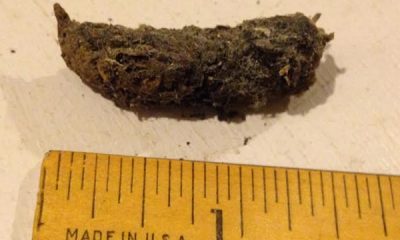
 Skunk4 years ago
Skunk4 years agoWhat Does Skunk Poop Look Like? Images & Identifications
-
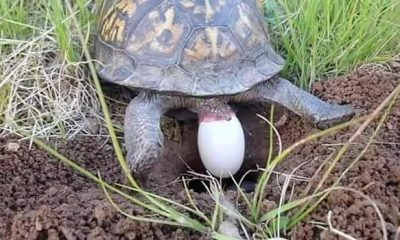
 Turtles4 years ago
Turtles4 years agoHow To Take Care of Turtle Egg At Home?
-
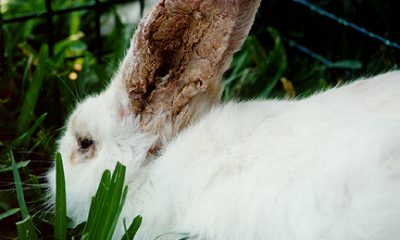
 Bunny4 years ago
Bunny4 years agoHow to Get Rid of Mites on Rabbits? #NaturalRemedies #Video
-

 Horse4 years ago
Horse4 years agoHow Much Weight Can a Horse Carry? #Clydesdale #Friesian #Mustang #Draft
-

 Turtles4 years ago
Turtles4 years agoHow to Take Care of Snapping Turtle Eggs? #Incubating #Hatching
-

 Bunny4 years ago
Bunny4 years agoHow Big Do Dwarf Bunnies Get? – Amazing Facts #Images
-
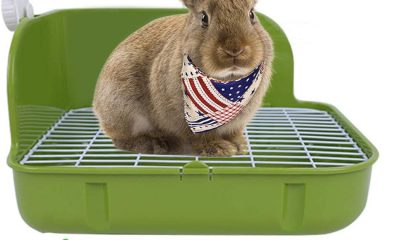
 Bunny4 years ago
Bunny4 years agoHow to Potty Train a Rabbit in House? Tips on Litter Training
-
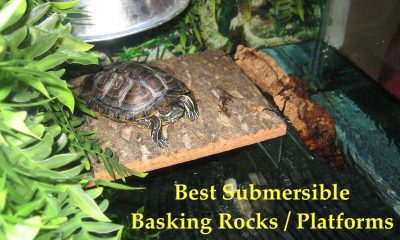
 Turtles4 years ago
Turtles4 years ago8 Basking Rocks/ Platforms for Turtles – A Perfect Guide






